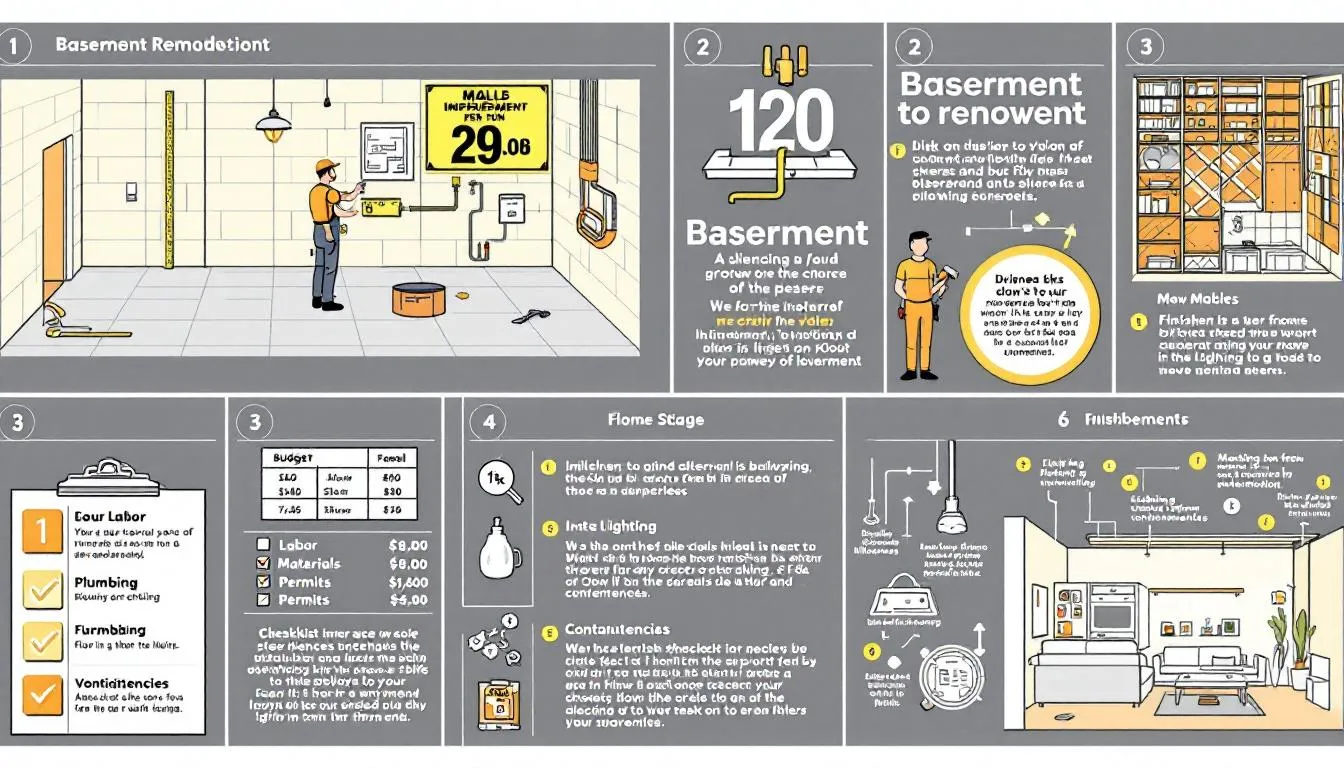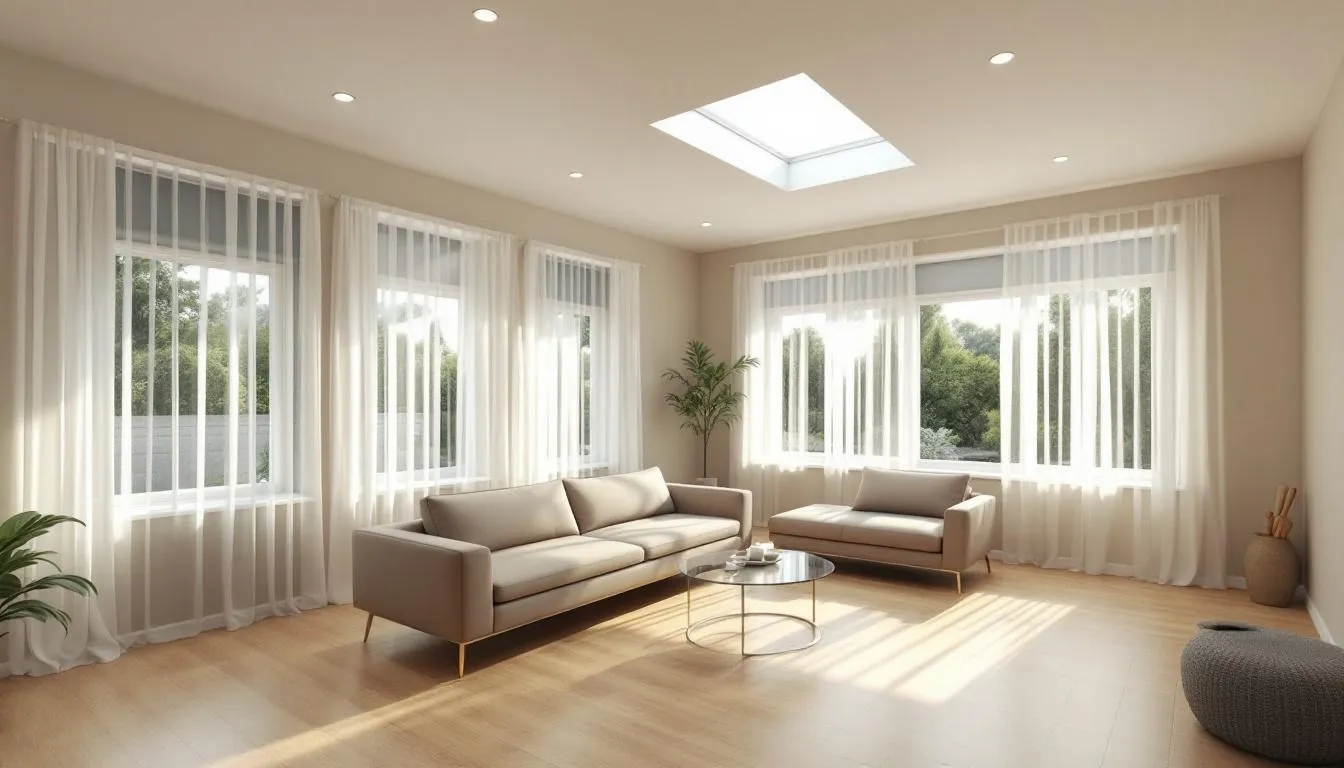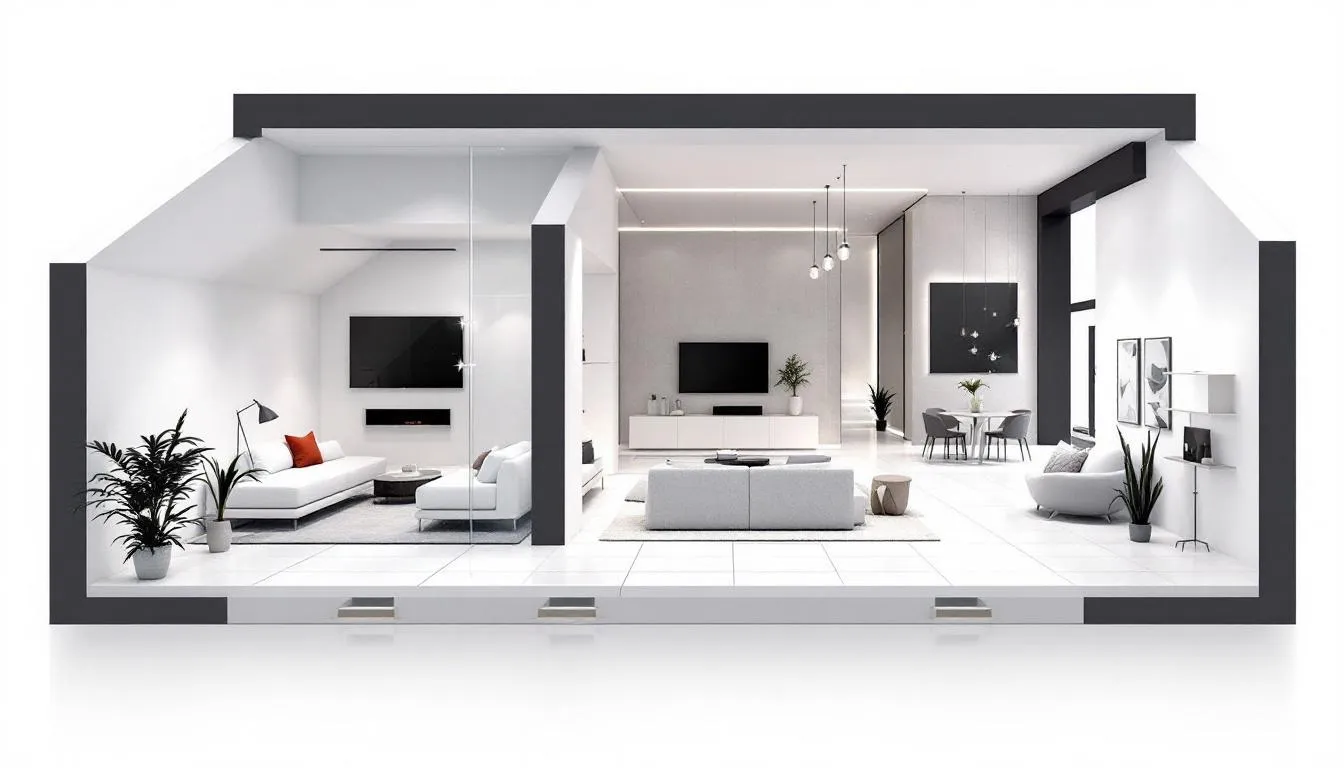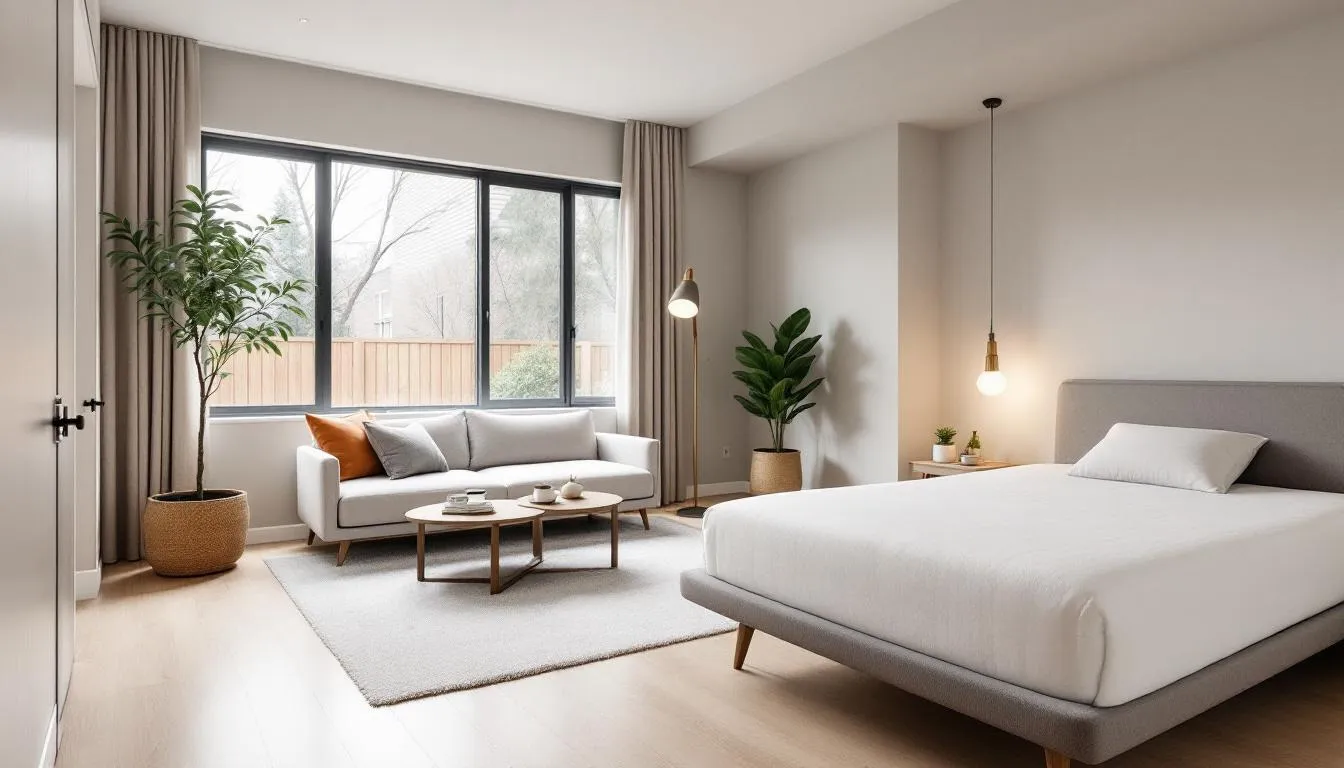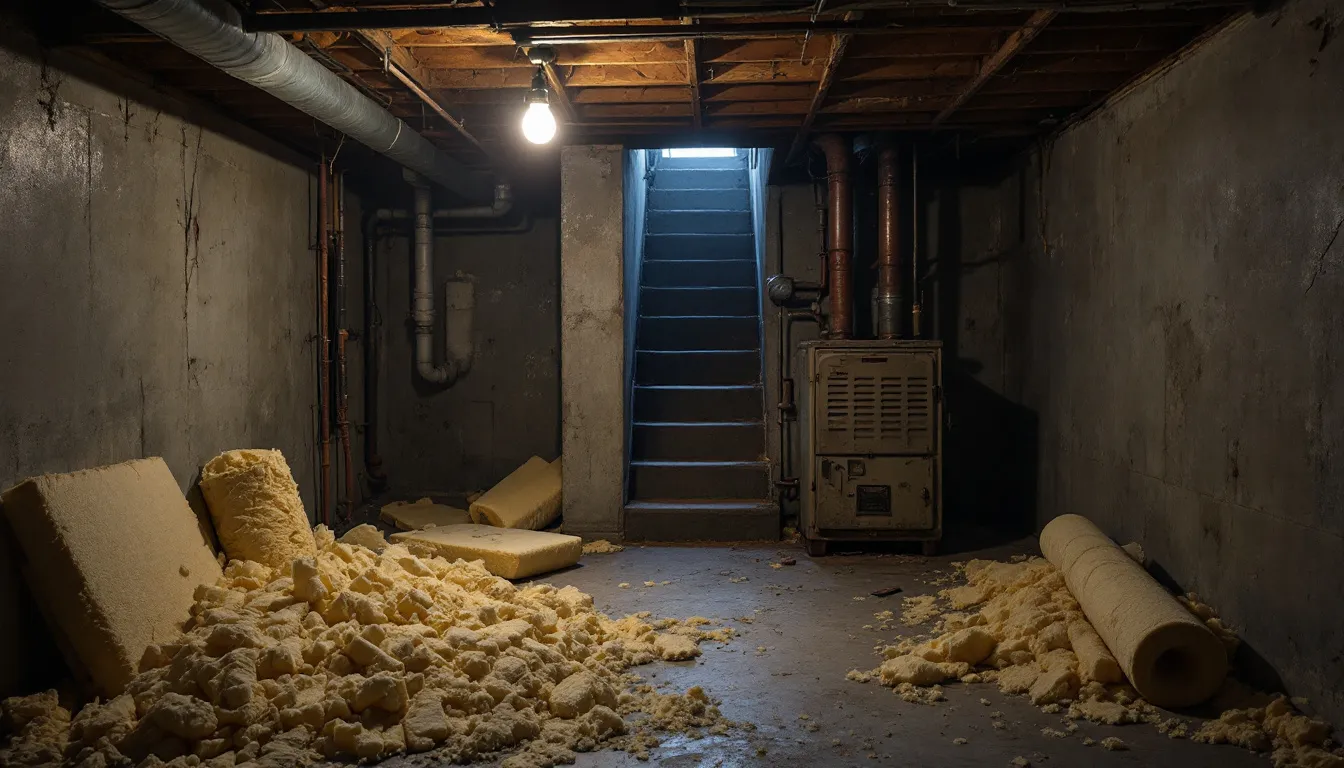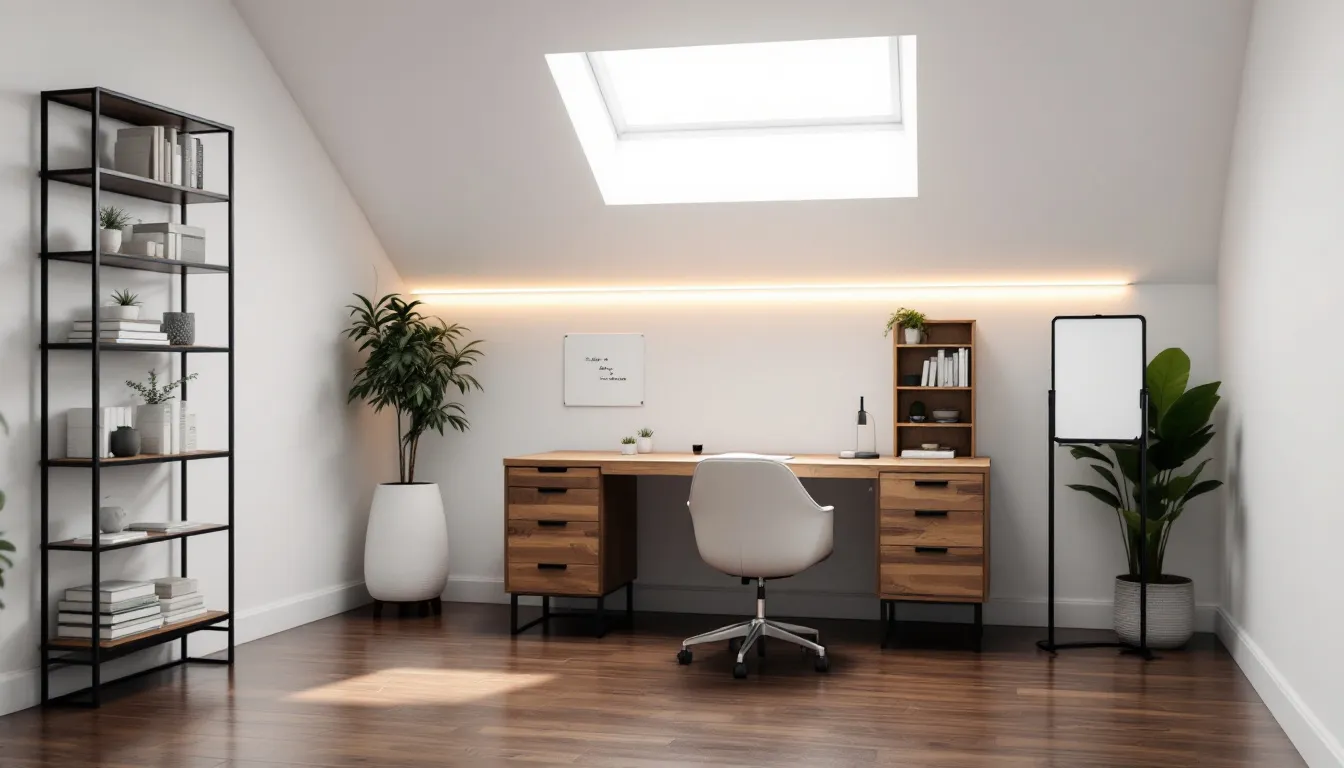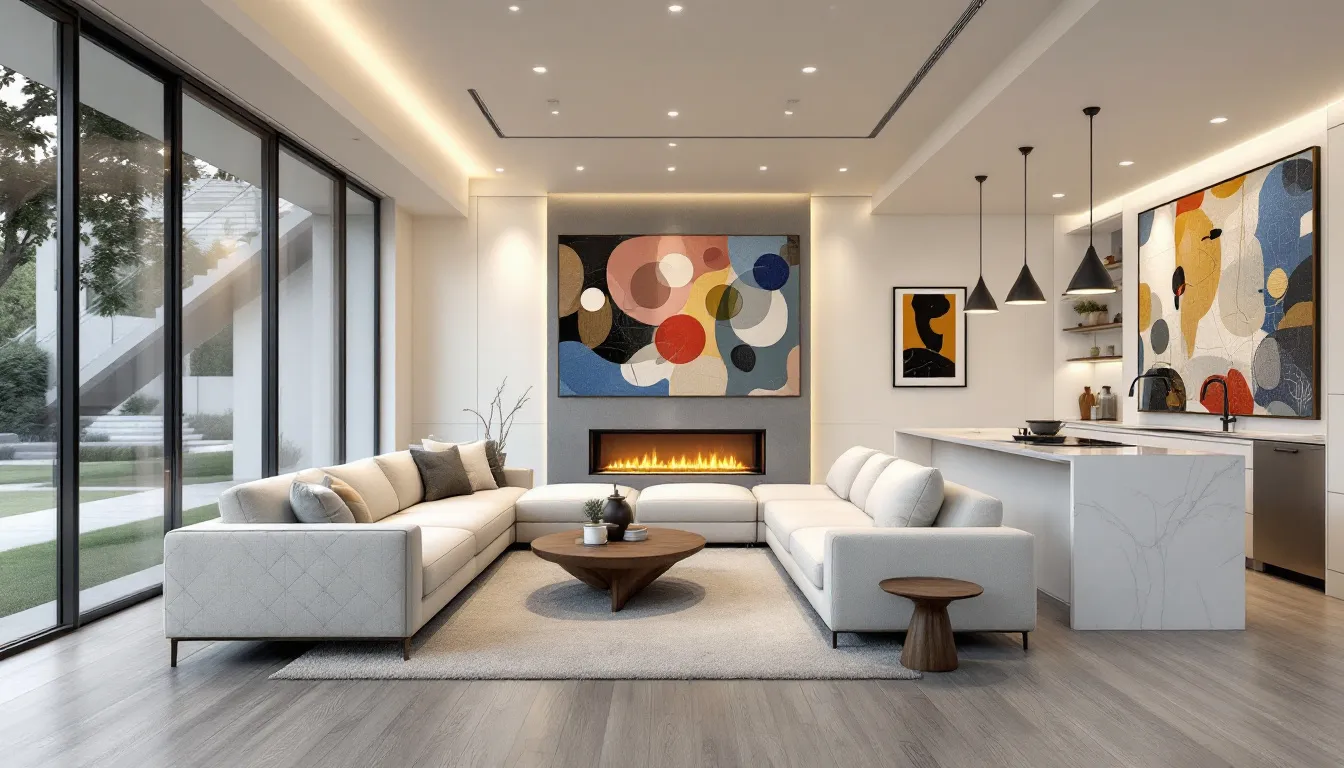Top Tips on How To Turn Your Basement Into a Cozy Living Space
Struggling with how to turn your basement into a cozy living space? This article will help you transform that cold, uninspiring area into a warm, inviting retreat. From color choices and lighting to cozy textiles and clever storage solutions, you’ll find practical tips to make your basement a place you’ll love.
Key Takeaways
- Use warm colors and cozy textiles to create an inviting atmosphere in your basement.
- Incorporate layered lighting and design functional zones for comfort and versatility.
- Maximize natural light and add personal touches to make the space feel unique and welcoming.
Choose Warm and Inviting Colors
The choice of colors is the foundation of creating a cozy atmosphere in your basement. Warm colors like beige, cream, and light brown can envelop the space in a welcoming hug, making it inviting and comfortable. Soft grays can also maintain a warm feeling without making the room feel stark or cold. Avoid stark white paint, as it can make the space feel cold and unwelcoming.
Coordinate the color scheme with your existing furniture and finishes to enhance the cozy environment. Using warm-toned whites can prevent the space from looking dull or washed out. Carefully selected warm colors create an inviting atmosphere, turning your basement into a cozy retreat.
Optimize Lighting for Comfort

Lighting is key to transforming your basement into a cozy living space. Layered lighting, including floor lamps, table lamps, wall sconces, and overhead lights, creates a warm, inviting ambiance. Warm lighting elements, such as incandescent or LED bulbs with a warm color temperature, can significantly contribute to a cozy atmosphere.
A mix of ambient and task lighting suits different zones, whether it’s a reading nook or a home office. For basements with low ceilings, flush-mounted or recessed lighting can provide ample illumination without consuming visual space. Adding table lamps and floor lamps can also enhance the cozy retreat feel while providing functional lighting for various activities.
Proper lighting enhances both functionality and the overall comfort and coziness of the space. Combining different lighting elements creates a versatile and inviting atmosphere that suits all your needs.
Incorporate Cozy Textiles
Textiles are key to making any space more inviting, and your basement is no exception. Sumptuous area rugs and carpets are fantastic flooring options that can significantly enhance the coziness of your basement. Large area rugs or heated floor systems can provide warmth, especially against cold concrete floors. Layering a patterned rug over wall-to-wall carpet can add even more warmth and comfort.
Adding throw blankets and cushions to your seating areas can make your basement feel even more inviting. Opt for textiles like faux fur, bouclé, and waffle weave blankets to add texture and enhance the cozy atmosphere.
Deep-textured area rug can also add inviting hues and warmth to the space. Incorporating these cozy textiles transforms your basement into a snug and welcoming environment.
Create Functional Zones
Distinct functional zones ensure efficient use of space, accommodating various activities and family gatherings. Designating different areas for a family room, entertainment zone, and home office nook can promote a more organized and enjoyable living environment.
Multi-functional furniture, such as ottomans with storage, can save space and maximize the efficiency of each designated zone.
Family Room Zone
The basement family room is the heart of your living space, perfect for gatherings and movie nights. Comfortable seating is essential, so consider plush sofas, cushioned chairs, and sectional couches. Bean bag chairs can provide flexible seating options and add a touch of fun.
Throw blankets and cushions make the space more inviting and cozy. These elements ensure your family room becomes a favorite spot for playing board games, watching movies, and spending quality time together.
Entertainment Zone
The entertainment zone is designed for relaxation and enjoyment, with a primary focus on watching TV. An optimal seating arrangement and immersive sound system create a comfortable and enjoyable media room. Arrange the room around the TV to create an ideal viewing experience.
Storage solutions for video games, movies, and other entertainment items are vital. Consider using cabinets with doors and countertops to keep everything organized and within reach. This zone is perfect for family movie nights with popcorn, blankets, and a cozy atmosphere.
Home Office Nook
A home office nook in your basement meets your work-from-home needs. Incorporate built-in office spaces to optimize functionality and make the most of the available space. Ensure plenty of light by blending ambient with task lighting to create an effective working environment.
Floor and table lamps add to the cozy atmosphere while providing necessary lighting for your tasks. This nook can become a productive and comfortable part of your basement’s living space.
Maximize Natural Light
Natural light can make a significant difference in transforming your basement into a bright and inviting space. Use light-colored window treatments, such as lightweight drapery, to allow more light to filter in. Pale hues or neutral beiges on walls can create an inviting atmosphere that reflects light effectively.
Mirrors can be strategically placed to provide an illusion of space and brightness, making the basement feel more open and airy. Floor-to-ceiling curtains can also enhance the feeling of larger windows while allowing natural light to permeate.
Maximizing natural light creates a more welcoming and comfortable living space.
Install Wall Treatments for Texture
Wall treatments can add depth and texture to your basement, making it feel warmer and more inviting. Wood paneling or textured wall treatments like shiplap can add warmth and texture to the space. Beadboard, wainscoting, and faux wood treatments are effective alternatives that can elevate the style of your basement walls.
Using vertical wood slats or textured wallpaper can create visual interest and enhance the sense of height in the basement. Wall treatments transform your basement into a cozy and stylish retreat.
Add a Fireplace for Extra Coziness
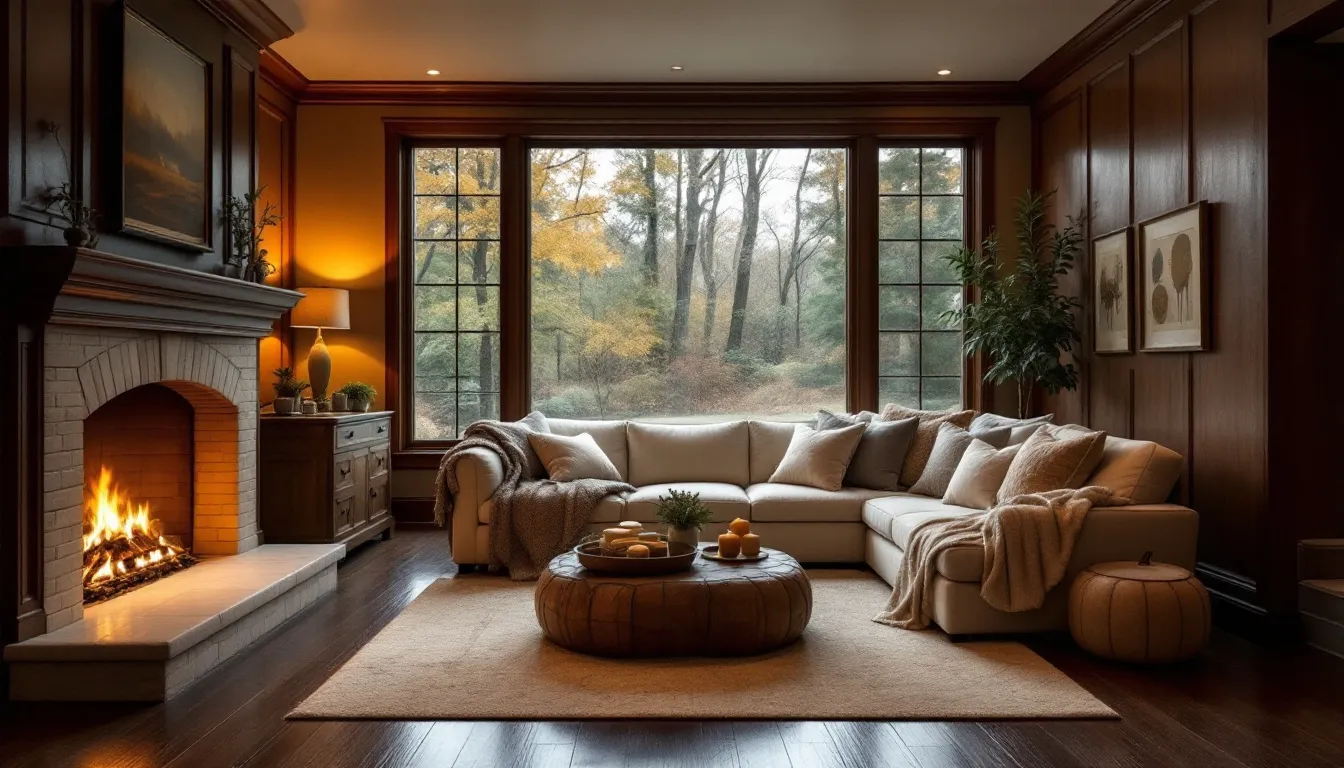
A fireplace adds warmth and coziness to your basement. Whether you choose an electric, gas, or wood-burning fireplace, it can elevate comfort levels and transform your basement into a cozy atmosphere. A fireplace makes your space more inviting and comfortable, perfect for relaxing on chilly days.
Utilize Warm Wood Tones
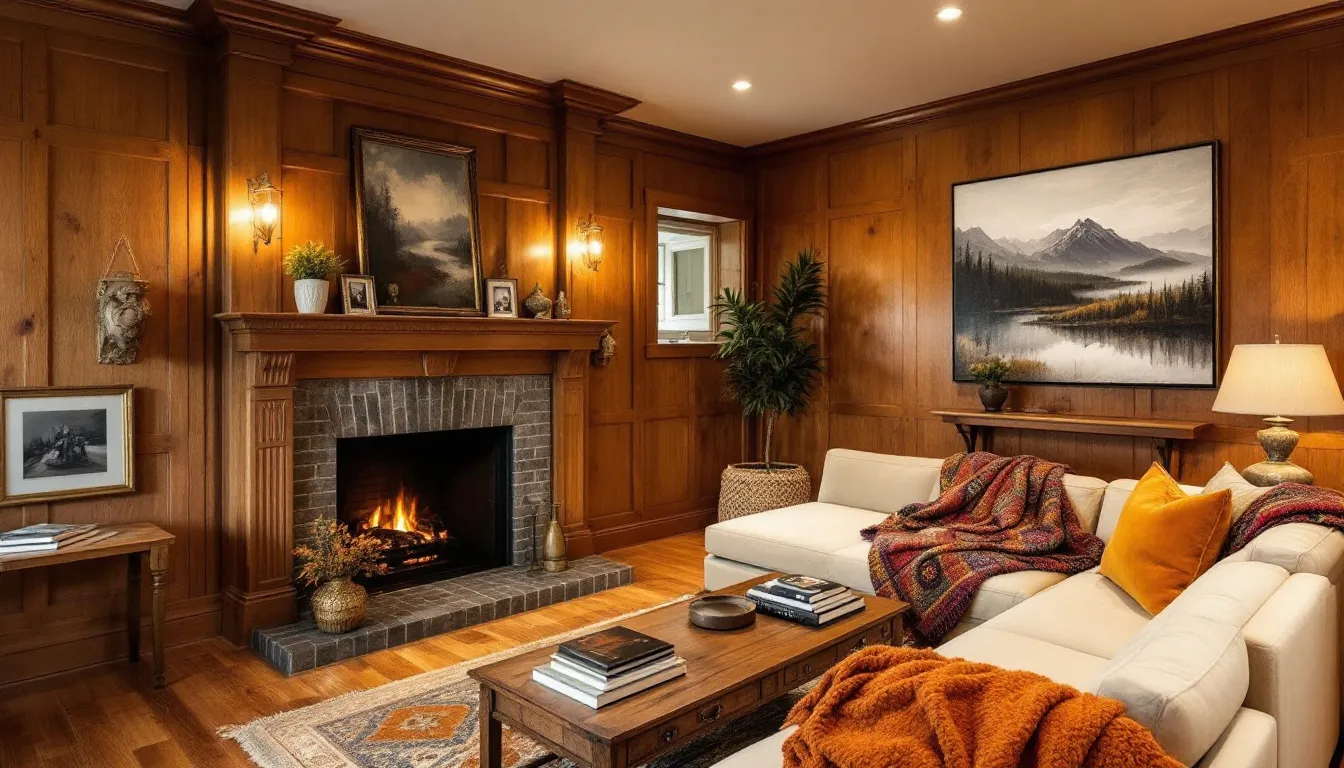
Incorporating warm wood tones through furniture and decor can significantly enhance the cozy environment of your basement. Wood furniture and decor with warm tones can enrich the comfort of the space and make it feel more inviting.
Warm-toned hardwood flooring is a practical option that adds color and contributes to a cozy atmosphere. Textured wood accents, such as wooden beams or furniture, create visual interest and add to the warmth of the space. Utilizing warm wood tones makes your basement a more inviting and cozy retreat.
Pay Attention to Ceiling Height
Addressing ceiling height is crucial for creating a comfortable living space in your basement. Painting millwork the same color as walls can make the ceiling appear taller. Using up lighting can create a floating effect for the ceiling, enhancing the illusion of height.
High gloss or semi-gloss finishes on the ceiling can create a sense of more vertical space. Recessed lighting is effective in low ceilings as it provides ample light without consuming visual space.
By paying attention to ceiling height and using these strategies, you can make your basement space feel more spacious and comfortable.
Get Creative with Storage Solutions
Innovative storage solutions ensure your basement remains clutter-free and organized. Use under-stair storage to maximize space in your basement. Designated storage solutions can reduce clutter and keep the basement well-arranged.
In the basement family room, utilize bins for toys, shelves for books and games, and a towel stand for extra blankets. Creative storage solutions create a functional living space that is both organized and inviting.
Include Fun Design Elements
Adding fun design elements can transform your basement into a versatile and enjoyable space. Consider adding a pool table or retro arcade games, which can provide entertainment and a nostalgic atmosphere. A selection of board games can enhance social interactions and make the basement a great spot for gatherings.
Bright and playful decor can make the space more inviting and enjoyable. Tailored banquette seating offers a functional and stylish option for leisure activities.
These fun design elements ensure your basement is a place where everyone loves to spend time.
Enhance the Entryway
A well-designed entryway sets the tone for the rest of your basement. Use a staircase that matches the home’s design to enhance the entryway’s aesthetic. Good lighting is necessary in basement entryways since natural light may be limited.
Ensure design elements in the entryway are cohesive to create a welcoming atmosphere. Enhancing the entryway creates an inviting atmosphere that makes a great first impression.
Design a Cozy Guest Bedroom
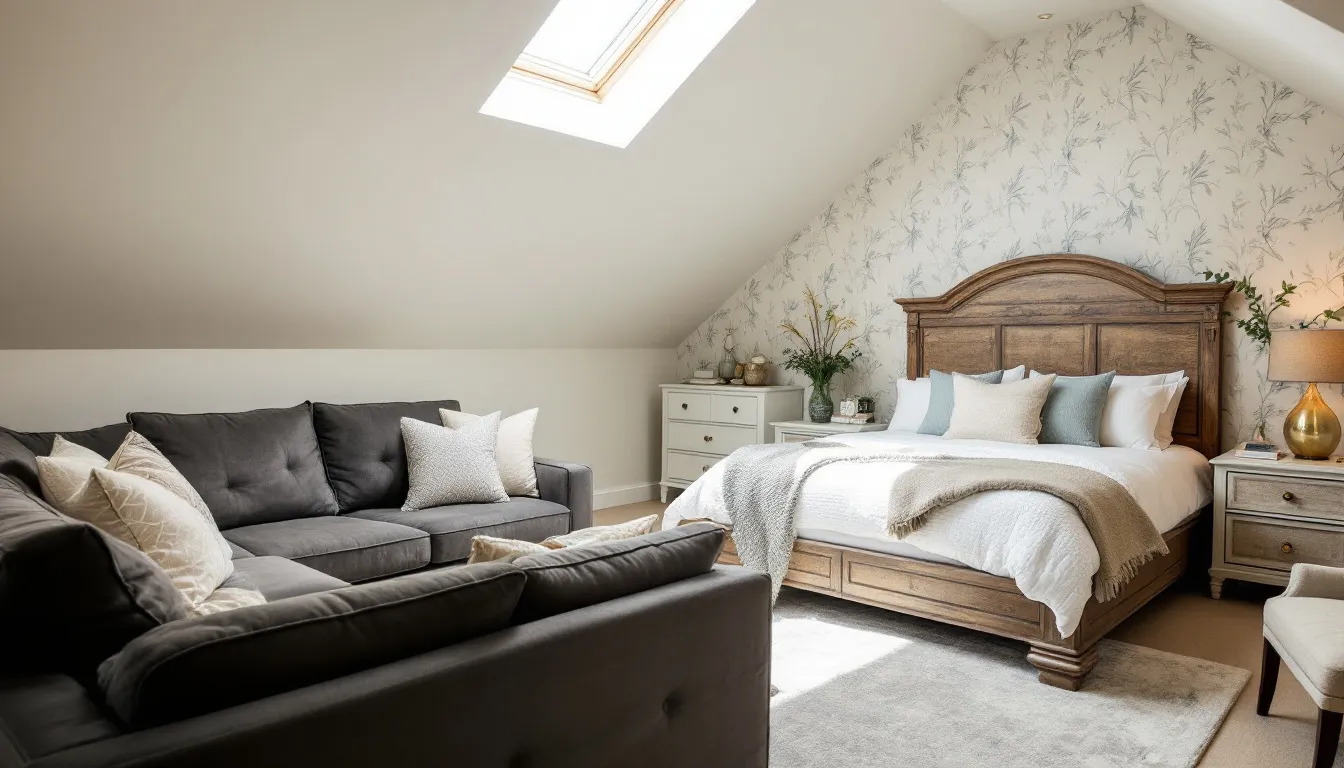
A cozy guest bedroom in your basement can provide a comfortable retreat for visiting friends and family. Layering multiple types of cozy textiles throughout the bedroom creates a comfortable and inviting atmosphere. Textiles like faux fur, bouclé, and waffle weave blankets can significantly enhance the coziness of the space.
Incorporate storage solutions like beds with concealed compartments and wall-mounted shelves to keep the space organized. Adding personal touches like a gallery wall with personal artwork and whimsical murals can make the space feel more inviting and enjoyable.
Designing a cozy guest bedroom creates a welcoming space for your guests.
Add Personal Touches
Adding personal touches to your basement can make the space feel uniquely yours. Incorporate eclectic art pieces and family photos to make the basement feel personal and inviting. Creating impressive focal points with statement artwork can distract attention from any negative aspects of the basement and add visual interest.
Textured wall treatments like board and batten can further enhance the visual interest of your basement. These personal touches create a space that reflects your style and personality, making it a true extension of your home.
Summary
Transforming your basement into a cozy living space is all about thoughtful design and personal touches. From choosing warm and inviting colors to incorporating cozy textiles and optimizing lighting, each element plays a crucial role in creating a welcoming and comfortable atmosphere. Creating functional zones ensures that your basement can accommodate various activities, making it a versatile and enjoyable space.
By paying attention to details like maximizing natural light, installing wall treatments for texture, and adding a fireplace, you can elevate the comfort and coziness of your basement. Personal touches and creative storage solutions further enhance the space, making it uniquely yours. With these tips and tricks, you can transform your basement into a cozy retreat that you and your family will love.
Ready to work with Basement Remodeling Long Island?
Let's connect! We’re here to help.
Send us a message and we’ll be in touch.
Or give us a call today at 646-801-1701
Agency Contact Form
More Marketing Tips, Tricks & Tools
